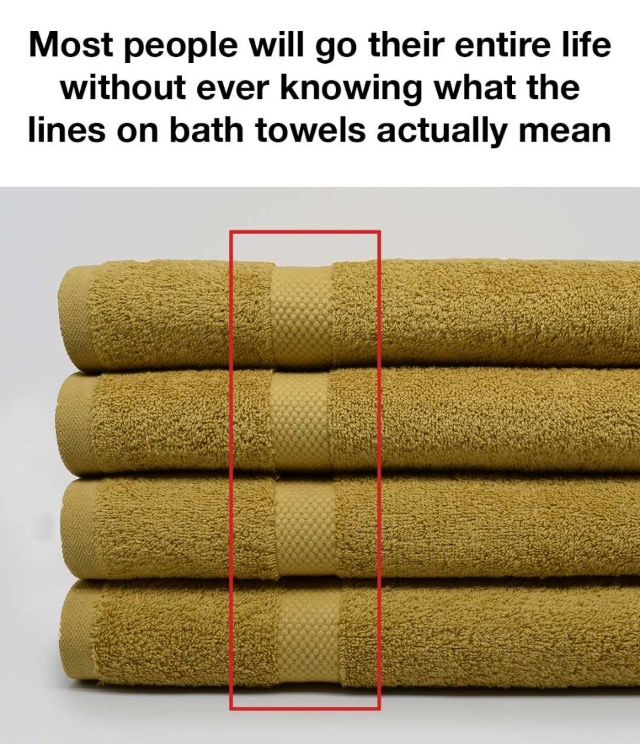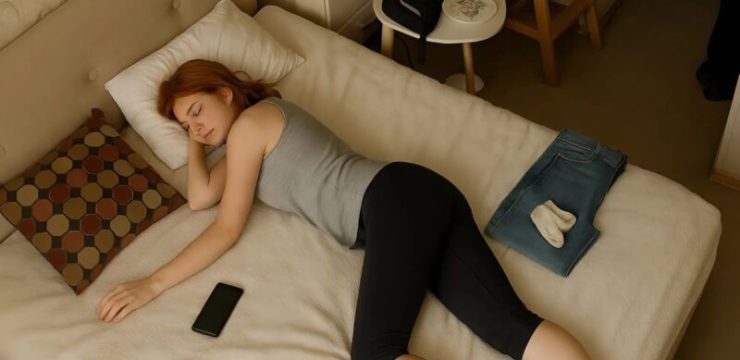A recent social media debate has captured the attention of thousands, sparking surprisingly intense discussions over something most of us have never really thought about—those mysterious lines that run across our bath towels. It might sound trivial at first, but just like the viral debate over the color of that infamous dress, this towel mystery quickly escalated into a full-blown internet curiosity.

The big question was simple: What’s the deal with the line or stripe you see near the ends of most bath towels? Is it purely decorative, or does it serve a real function? As people chimed in online, responses ranged from hilarious to genuinely inquisitive. Some jokingly referred to the stripe as a “face/butt dividing line,” implying it was there to help people remember which side they used for what—definitely a creative take. Others suggested it could be a “racing stripe” to make the towel look faster or dry more efficiently. And, of course, some people insisted it was just a design element added for aesthetic appeal. While the humorous theories entertained the internet for a while, many were genuinely curious to know the real purpose of that mysterious stripe.
Thankfully, towel experts were quick to step in and settle the debate once and for all. The line in question is called the “dobby border,” and no, it’s not just there for looks. In fact, this subtle detail serves several important functions that most people have probably never considered. The dobby border is a woven band—usually found at both ends of a towel—that helps reinforce the structure of the fabric.
One of its main jobs is to prevent the towel from fraying over time, especially after multiple trips through the washer and dryer. Anyone who’s ever had an old towel fall apart at the edges can appreciate the value of that reinforcement. The dobby border also plays a critical role in maintaining the towel’s absorbency.
According to experts at Towel Hub, getting the right balance between a towel’s softness, thickness, and ability to absorb water is a real challenge. Without proper structure, the edges of a towel can become bulky or uneven, which not only feels awkward but also affects how well the towel dries you off. The dobby border helps solve this issue by keeping the towel’s weave balanced and intact, so it continues to function well wash after wash.
But there’s more to the dobby border than just durability. It also has a visual purpose. The stripe gives users an easy way to fold and hang the towel neatly, helping it keep its shape and presentation over time. If you’ve ever folded a towel and tried to make it look neat and even, that stripe can serve as a subtle guide. And let’s face it—it does add a touch of style to an otherwise plain piece of fabric. That’s probably why many towel brands use the dobby border as a signature element in their designs. It’s functional, it’s classy, and it elevates the overall appearance of the towel. So, while it may seem like a minor detail, the dobby border actually does a lot of heavy lifting.
It’s proof that even the smallest features can serve a big purpose. Next time you reach for a bath towel, take a moment to appreciate that little stripe. It’s not just a random piece of decoration—it’s a thoughtful design choice that enhances the towel’s performance and lifespan. And now that you know what it’s really for, you can impress your friends with your newfound towel trivia. Because let’s be honest—there’s something oddly satisfying about discovering the true purpose behind something you’ve seen a million times but never questioned. So go ahead, pass this knowledge along. You never know who might be just as curious about towel lines as you were.





